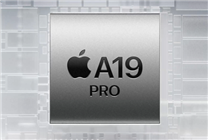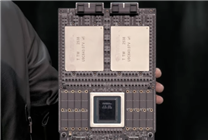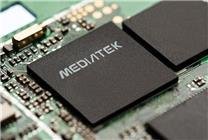Summary
- Apple’s A19 Pro Sets New Benchmarks: With a single-thread score of 3,895, it outperforms many desktop CPUs, including the AMD Ryzen 9 9950X and Intel i9-14900KS.
- Graphics Performance: The A19 Pro GPU achieves a score of 45,657 on Geekbench 6, showing a significant 37% performance boost over its predecessor.
- Enhanced Efficiency: The new VC heat sink system allows for a 40% continuous performance improvement, making it ideal for resource-intensive tasks.
On September 12, Kuai Technology reported significant advancements in the single-core performance of the new Apple A19 Pro chip, particularly in contrast to powerful desktop processors such as the AMD Ryzen 9 9950X.
According to Geekbench 6 benchmark results, the A19 Pro boasts an impressive single-threaded running score of 3,895 points. This marks an 11% improvement over the previous generation A18 Pro and a substantial 36% increase compared to Qualcomm’s flagship Snapdragon 8 Elite processor.
More striking is the chip’s ability to outperform several desktop-level processors. The A19 Pro’s single-thread performance surpasses Apple’s own M4 chip by 5.3%, AMD’s Ryzen 9 9950X by 11.8%, and Intel’s i9-14900KS by 15.8%. This achievement solidifies Apple’s lead in mobile processing performance, particularly for tasks that rely heavily on single-thread execution.
However, when it comes to multi-threaded performance, the A19 Pro scored 9,746 points, reflecting only a 12% increase from its predecessor. This performance still falls short of mainstream desktop CPUs, partly due to the power consumption constraints and the lesser core count typical of mobile devices. The A19 Pro maintains a six-core architecture, comprising two performance cores and four energy efficiency cores.
While Apple did not release detailed specifications for the GPU during its press event, the measured data indicates a noteworthy improvement. The A19 Pro’s GPU achieved a Geekbench 6 Metal score of 45,657 points, demonstrating a remarkable 37% increase over the A18 Pro. The performance levels are comparable to the GPUs found in the M2 and M3 chips used in the iPad Air, as well as the AMD Radeon 890M integrated graphics.
In terms of graphics architecture, the iPhone 17 Pro series comes equipped with a six-core GPU, while the iPhone Air features a five-core configuration. This differentiation underscores Apple’s commitment to enhancing the graphical capabilities of its premium devices.
According to information from Apple’s official website, the A19 Pro’s redesigned VC heat sink system facilitates a continuous performance gain of up to 40% relative to the previous generation found in the iPhone 17 Pro series. This improvement presents a significant advantage for demanding applications such as gaming, video editing, and running complex local models, showcasing the chip’s relevance in a world increasingly reliant on high-performance computing.
The performance metrics associated with the A19 Pro challenge assumptions about mobile processors, elevating the standard for mobile computing power. This evolution in processor technology speaks not only to the future capabilities of mobile devices but also to potential applications requiring advanced computations, propelling industries that rely on mobile technology into new realms of performance.
As technology continues to evolve, the implications of such advancements can reshape user expectations and interactions with mobile devices, potentially inspiring newer applications in various fields, from entertainment to professional software environments.
The Apple A19 Pro stands at the forefront of this shift, setting a new benchmark for mobile processors while pushing the limits of what users can expect from their devices.







